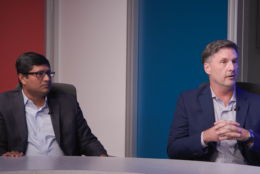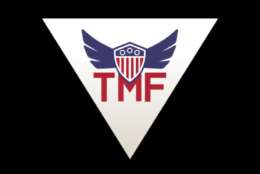IT Modernization
-
A cross-agency team focused on how the federal government can improve public-facing services online is looking at text messages as the new frontier for better customer experience.
October 03, 2023 -
For government leaders, a mindset shift towards being post-digital will create more strategic opportunities for better meeting the mission. Having ubiquitous and autonomous data doing all of the work on the back-end, it will be easier to create individualized and on-demand services for addressing any constituent need.
October 03, 2023 -
Andre Mendes, the chief information officer at the Department of Commerce, was one of several agency technology executives pushing for more consistency around cyber metrics under the FITARA scorecard.
October 02, 2023 -
In the rapidly evolving landscape of wireless communications, O-RAN presents a disruptive innovation that is driving transformation. By fostering a more competitive environment, O-RAN is facilitating the development of more innovative, efficient and cost-effective solutions, setting the stage for the next era of wireless connectivity.
October 02, 2023 -
As the government continues to modernize, zero trust remains a top priority. Agencies can leverage this potential influx of funding to make strategic investments that achieve zero trust goals.
September 29, 2023 -
Recently, MITRE and the Cybersecurity and Infrastructure Security Agency (CISA) released the Open-Sourced Extension of MITRE's Caldera platform, specifically for operational technology. This is meant to be utilized by security teams to run automated adversary emulation exercises that are specifically focused on threats to operational technology.
September 29, 2023 -
Modernization requires understanding the ultimate users’ needs and the challenges constituents have dealing with systems an agency might deploy. A principal challenge to modernization, according to Guidehouse partner Arijeet Roy, stems from the cost of maintaining and operating legacy systems.
September 29, 2023 -
The majority of federal, state and local authorities still rely on paper-based processes and legacy systems that are unable to exchange data with each other. As a result, government organizations often struggle with inefficiencies, disorganization…
September 28, 2023 -
The Department of Veterans Affairs’ top IT officials say warning bells didn’t sound when its website experienced problems, leading to a delayed response to address the issue.
September 27, 2023 -
The 16th version of the Federal IT Acquisition Reform Act (FITARA) scorecard from Congressman Gerry Connolly (D-Va.) revealed two new pilot categories measuring the move to cloud and CIO authorities.
September 26, 2023 -
OMB’s new guidance, Delivering a Digital-First Public Experience, seeks to accomplish the spirit and intent of the 2018 21st Century IDEA Act.
September 22, 2023 -
Without universal standards around data collection and formatting, merging and aggregating data from different sources is like fitting together puzzle pieces that don’t match. Critical data points may be missing or fragmented, creating gaps in data sets. This lack of interoperability can not only hinder cross-agency collaboration, but pose challenges around data analysis and forging insight-oriented solutions.
September 21, 2023 -
Launched Oct. 1, 2013, HealthCare.gov was the public-facing embodiment of what The New York Times called “the most expansive social legislation enacted in decades.” The online marketplace was intended to allow people to begin purchasing health insurance under the Affordable Care Act.
September 19, 2023 -
Join Tom Temin and SAIC's Shawn Kingsberry as they explore how to enhance your IT modernization effort through zero trust strategies.
September 19, 2023 -
A new bill from Rep. Nancy Mace (R-S.C.) would extend the Technology Modernization Fund Board by five years and add some more specifics about the repayment requirements for loans or investments.
September 18, 2023















